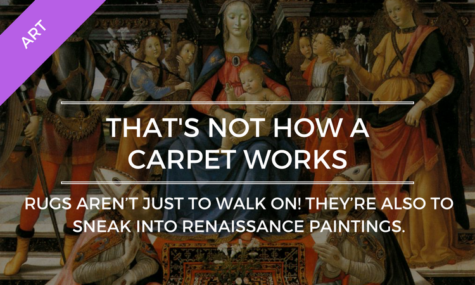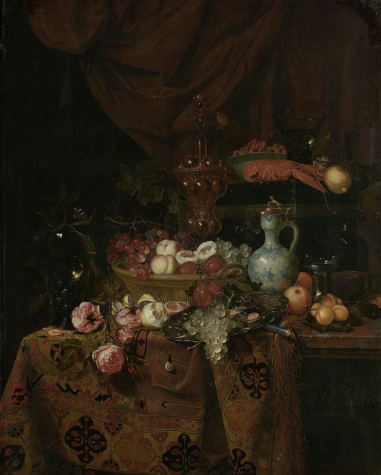
Rugs aren’t just for walking on! They’re also to look at and sneak into Renaissance paintings.
In the Italian Renaissance, Persian rugs were all the rage in Venice, which was the capital of the art world. The Venetians set the trends and began to include new, Persian geometric patterns found on carpets and tapestries in their paintings.
Roll Out the Red Carpet
Paintings were incorporated rugs for many different reasons. One of the most important reasons was to immediately highlight the most important figure in the painting. The rugs functioned as “red carpets” and were usually placed on the ground under the feet of the central figure. It functioned as a highlighter for the protagonist, such as in the example below.
(Just in case you were confused that Baby Jesus was the focal point of this painting.)
Make ‘Em Feel Like They Know You

The Persian rugs also brought historical or religious figures into a more contemporary setting. By adding something that could be around today, the painter was inching the past and the present closer together.
They’re Rich And Well-Traveled

The carpets were depicted in paintings as a sign of exoticism, which also told the viewer that these people are wealthy enough to have something from outside their immediate surroundings. Aka: they’re rich AF.

Persian carpets were a display of wealth and class. They showed that you were fancy and didn’t care who knew it. Super popular to use in both genre paintings and portraits, the presence of Persian carpets said a lot about the subject without needing to include any ancillary placards.
When I Die, Name A Carpet After Me

Many of these carpet types also gained notoriety because of the paintings they were featured in. The designs were named after the artists who painted them. They each had specific patterns and structures that gave it its name. Holbein had 4 patterns named after him, along with Lotto Bellini, Crivelli, and Memling. This was also kinda not cool, because many of these patterns already had names that were special to the people who had originally designed them, and these artists co-opted the original rug-makers’ work.
A Rug By Any Other Name
The next time you come across a weird Renaissance painting with a rug, take a second to ponder: what is this rug trying to tell me? Chances are, it’s something much more complicated than, “These people wanted to keep their feet warm on their cold wood floor.”


